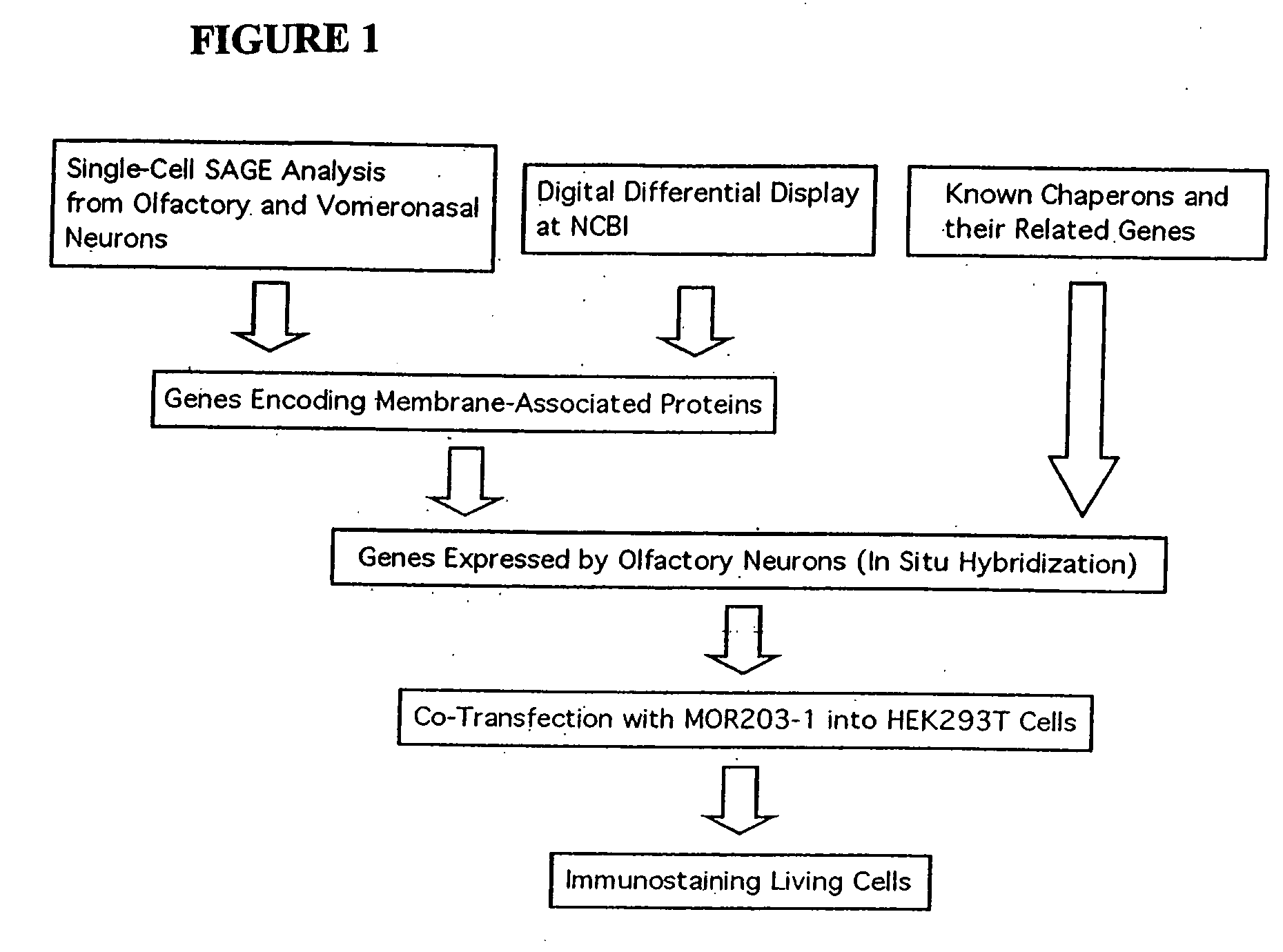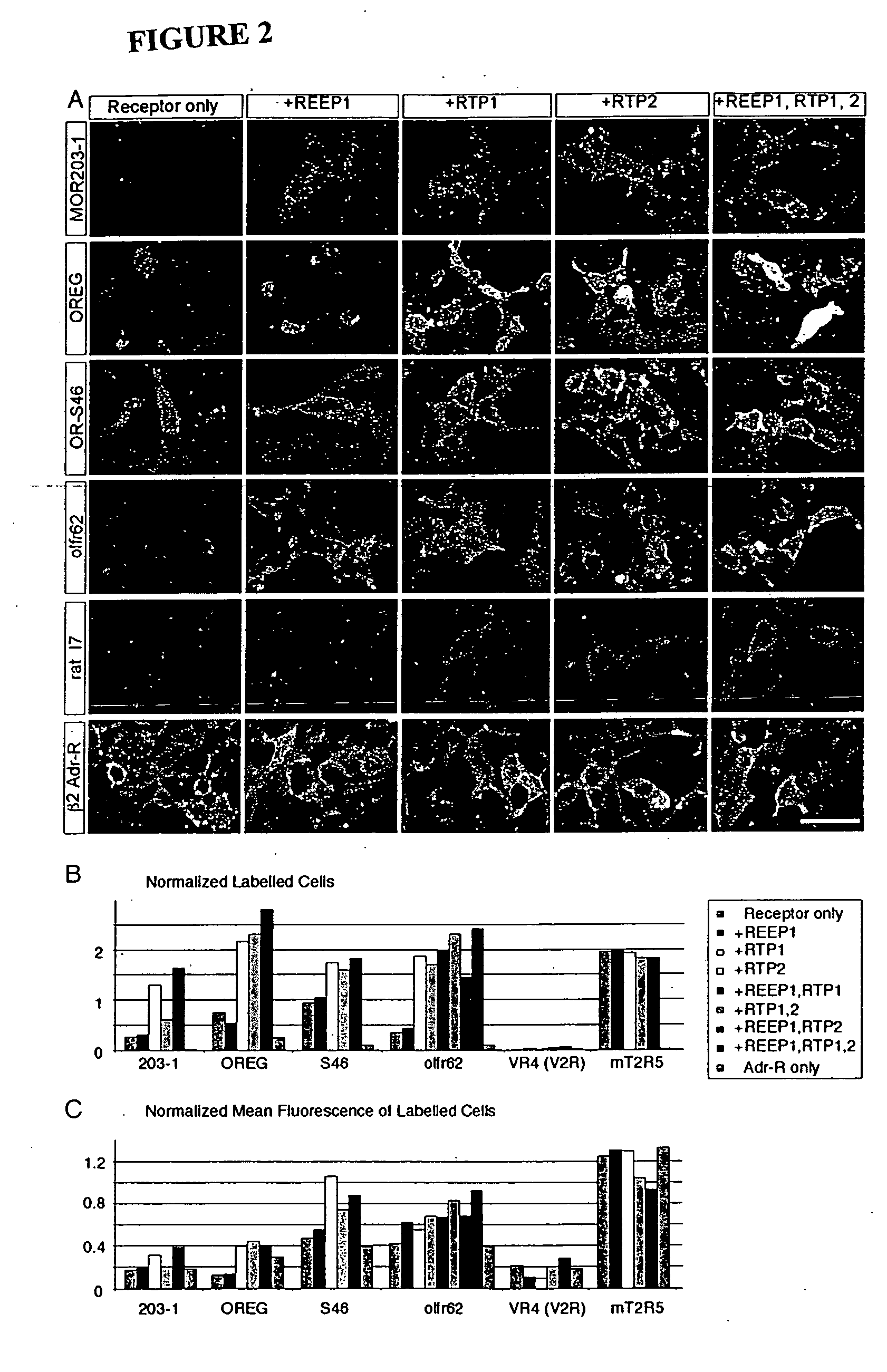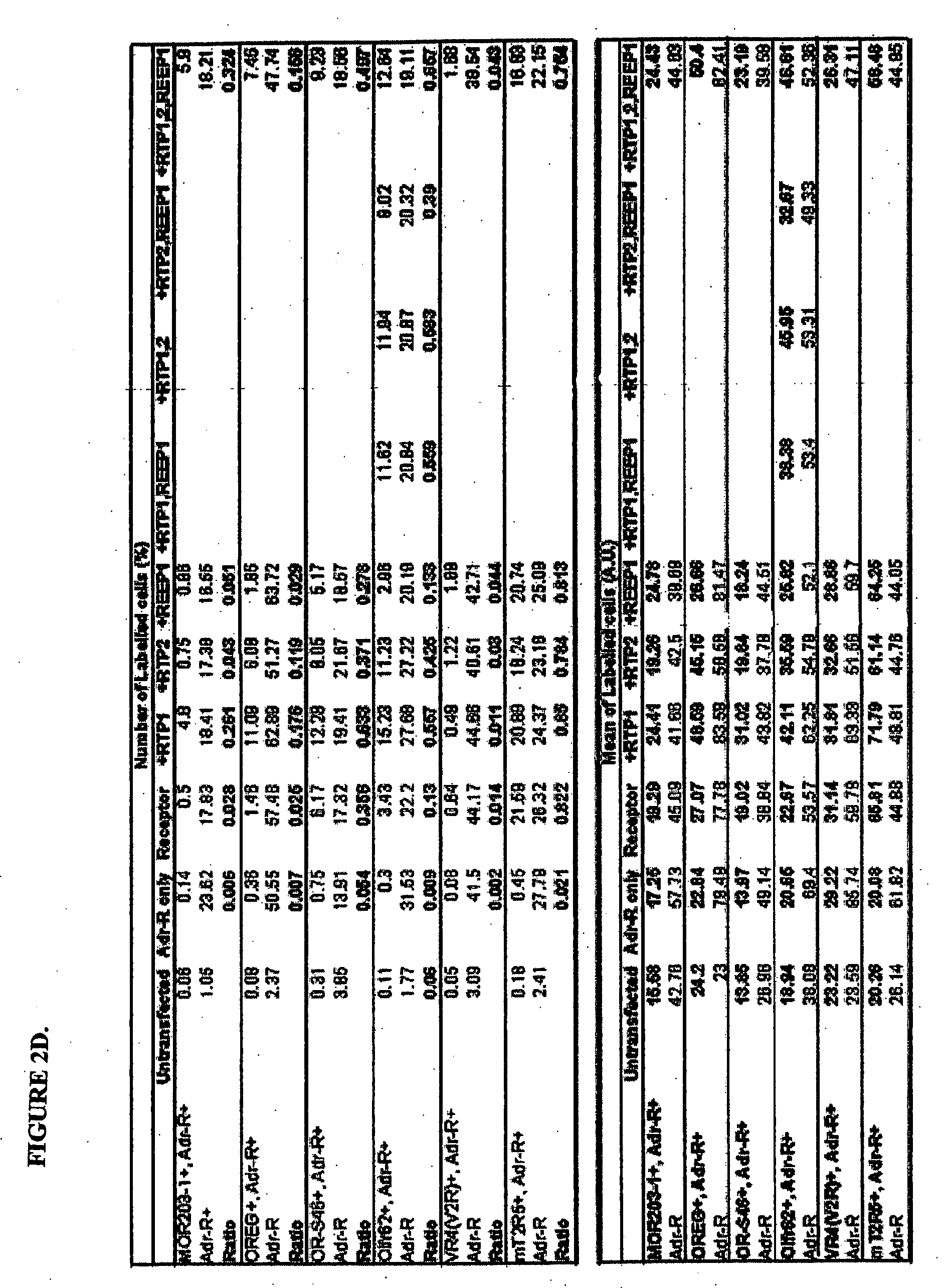Modulators of odorant receptors
a technology of odorant receptors and modulators, which is applied in the field of polypeptides, can solve the problems of affecting food preference, food intake and appetite, and olfactory damage, and achieves the effects of reducing the number of odorant receptors
- Summary
- Abstract
- Description
- Claims
- Application Information
AI Technical Summary
Benefits of technology
Problems solved by technology
Method used
Image
Examples
example 1
Identification of Odorant Receptor Accessory Proteins
[0371] After hypothesizing that mammalian ORs require accessory protein(s) for functional cell surface expression, a search was instituted for detecting such molecule(s). Long-SAGE (serial analysis of gene expression) libraries (see, e.g., Saha, S., et al., (2002) Nat Biotechnol 20, 508-512; herein incorporated by reference in its entirety) were constructed from single olfactory neurons as well as neurons from the vomeronasal organ and genes were collected that are expressed by these neurons. To identify candidate genes expressed by the olfactory neurons Digital Differential Display (see, e.g., http: / / www.ncbi.nlm.nih.gov / UniGene / info_ddd.shtml) was also used. Candidate genes were investigated for ORFs that encode membrane associated proteins. Genes were selected with similarities to known chaperones and cloned the cDNAs from olfactory epithelium cDNAs. The mRNA expression of each gene was verified by in situ hybridization. After...
example 2
REEP and / or RTP Enhance Cell Surface Expression of ORs
[0372] Two unrelated clones (of 61 tested) enhanced both the number and staining intensity of cell surface expression of MOR203-1 (see FIG. 2A). The proteins encoded by these clones were named REEP1, for Receptor Expression Enhancing Protein 1 and RTP1, for Receptor Transporting Protein 1. Subsequently, RTP2 was found, a close relative of RTP1. RTP2 also enhanced cell surface expression of MOR203-1. Next, REEP1, RTP1, and RTP2 were tested to detect a similar effect in promoting cell-surface expression of other ORs. Four different ORs (mouse OREG, mouse olfr62, mouse OR-S46 and rat I7) were expressed in 293T cells with or without REEP1, RTP1, or RTP2. Co-transfection of BFP or GFP demonstrated that transfection efficiency was consistent (˜70%). Additionally, ORs transfected with REEP and / or RTP generated more immunofluorescent cells and stronger signals in positive cells compared with ORs without REEP and / or RTP (see FIG. 2A). Th...
example 3
REEP and / or RTP Genes Encode Transmembrane Proteins
[0374] The REEP1 gene encodes a protein of 201 amino acids, containing two putative transmembrane domains (see FIG. 5A). Immunostaining of C-terminal tagged REEP1 protein indicate that the C-terminal end is extracellular. BLAST searches identified homologous genes in diverse eukaryotic species. REEP1 showed limited similarities with yeast YOP1, barley HVA22, and human DP1 / TB2 (see FIG. 5B). YOP1 is implicated in vesicular transport (see, e.g., Brands, A., and Ho, T. H. (2002) Plant Physiol 130, 1121-1131; herein incorporated by reference in its entirety). Expression of HVA22 is induced by abscisic acid and regulated by various environmental stresses such as extreme temperatures or dehydration (see, e.g., Chen, C. N., et al. (2002) Plant Mol Biol 49, 633-644; Shen, Q., et al. (1993) J Biol Chem 268, 23652-23660; each herein incorporated by reference in their entireties). DP1 / TB2 is encoded by a gene deleted in colon cancers (see, e....
PUM
| Property | Measurement | Unit |
|---|---|---|
| Biological properties | aaaaa | aaaaa |
Abstract
Description
Claims
Application Information
 Login to View More
Login to View More - R&D
- Intellectual Property
- Life Sciences
- Materials
- Tech Scout
- Unparalleled Data Quality
- Higher Quality Content
- 60% Fewer Hallucinations
Browse by: Latest US Patents, China's latest patents, Technical Efficacy Thesaurus, Application Domain, Technology Topic, Popular Technical Reports.
© 2025 PatSnap. All rights reserved.Legal|Privacy policy|Modern Slavery Act Transparency Statement|Sitemap|About US| Contact US: help@patsnap.com



